Digital technologies are no longer an abstract idea that only preoccupies IT geeks. Computer-controlled cars, buildings and airports make up an interactive global network of cosmic proportions. In 2017, we will see better than ever how seemingly abstract algorithms transform into technological organisms that affect the lives of vast human communities.
“(…) I’m going to start by exploring what technology is already out there. Then I’ll start teaching it to understand my voice to control everything in our home – music, lights, temperature and so on. I’ll teach it to let friends in by looking at their faces when they ring the doorbell”. These words, spoken by Mark Zuckerberg a year ago, perfectly illustrate commonly-held notions about how Artificial Intelligence may enter our homes and become part of our daily lives. A few years earlier, he would have sounded like a dreamer, but today no eyebrows are raised. What is more, such technology already exists and is sold commercially.
Intelligent Things
These are all things that the average Joe has access to through the development of Artificial Intelligence. After all, drones, autonomous vehicles and robots provide best evidence that machine intelligence has become a part of life. The story of the Tesla brand, which received a lot of publicity last year, shows that artificial intelligence is set to change the face of personal mobility. Contrary to the predictions of skeptics, autonomous vehicles may well improve traffic safety, while autonomous trucks seriously affect the economics of hauling goods. Even today, it is clear that Tesla cars are not Elon Musk’s last word in revolutionizing transportation. Suffice it to mention the Hyperloop project. A new ultra-fast urban rail transit system is now being tested and may become reality in selected cities even this year. Smart tools such as screwdrivers fitted with interchangeable head bits switched automatically as needed, operated by a bespectacled human with an image of repair procedures superimposed over his view of reality (augmented reality) will help not only to speed up certain repairs and machine readjustments, but also cut costs, accelerate manufacturing and allow production customization in response to individual requests and desires.
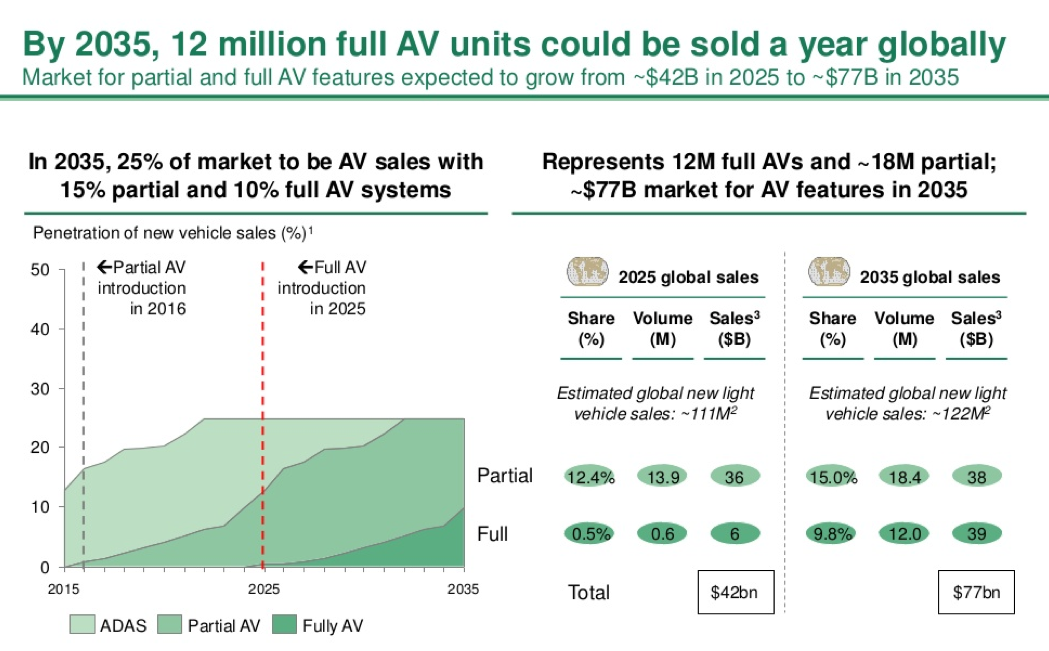
Example of Intelligent Things – autonomous vehicle market predictions.
Smart apps
Smart applications are spreading ever faster. They are used for learning and entertainment as well as day-to-day work in the office. Simple virtual assistants are already available for personal computers and smartphones. Such solutions save time during the performance of daily tasks, helping – for instance – to manage and send e-mails according to precisely-defined rules. Top global companies increasingly use analytical programs that process data to ever more complex specifications. One popular trend is to use applications that combine transactions and analytics. These allow persons responsible for data entry to analyze data on an ongoing basis.

Intelligent Applications ecosystem – source: techcrunch.com.
Virtual & Augmented Reality
The past year was crucial for augmented and virtual reality for a number of reasons. The former gained popularity on the back of the Pokémon Go success. Fans of traveling in virtual spaces got their own treat with the market launch of the Oculus Rift headset made possible by a spectacular crowdfunding campaign on Kickstarter. Both technologies are growing by leaps and bounds, driven in popularity by the enthusiasm of individual users who are equally enthralled by the virtual overlay on reality (AR) as they are by the chance to explore colorful virtual worlds. The next step in advancing the two technologies may result from initiatives within the medical industry. VR and AR solutions appear to be ideal for training future doctors in virtual operating rooms. Architects will be offered a perfect creativity tool while industry may use AI to bring to customers considerably more sophisticated product information that is also easy to understand.

Difference between Virtual and Augmented reality.
Internet of Things
We are entangled in a global web which grows daily with the connection of every new device. The world today is home to more than 10 billion devices with autonomous web access. It is therefore reasonable to look for ways to ensure that all these desktops, smartphones, household appliances, on-board car computers and Wi-Fi stations communicate efficiently with one another. The authorities of the Korean town Songdo have already found an answer. They decreed that all public spaces, private homes and streets be fitted with sensors that enable global mutual cooperation among every electronic device physically located in their city. If they succeed, they will create the smartest town on the planet. Note that all the devices hooked up to the global network generate an enormous amount of data. The next challenge is therefore to process the data and use it for the development of services and the advancement of humanity in general. The fact of the matter is that the Internet of Things is the most powerful source of big data.
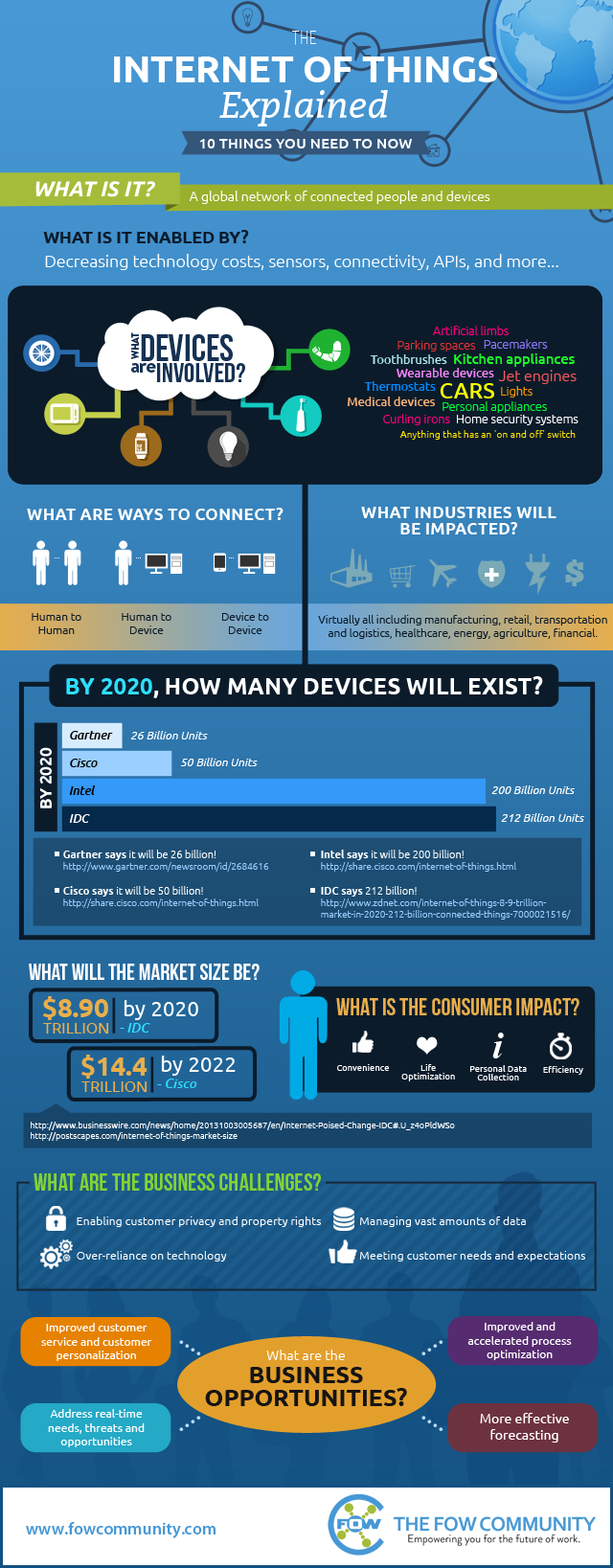
Internet of Things market – example of connectors, sensors and platforms.
The message is us
Many years ago, the well-known communications theorist Marshall McLuhan coined the term ‘global village’. He claimed that as the mass media grow exponentially, they gain independence becoming autonomous entities. Their role in recording events becomes secondary. While his observations are no less valid today; the world has grown even more complex with its digital avatars, virtual reality and the Internet of Things. With each passing year, the world is being redefined with the borderline between us – people – and digital images, messages and content becoming increasingly blurred. This year will certainly bring many social phenomena that will take the trend even further. What will be the new Pokémon Go? I don’t know, but I am sure that we are all bound to see one.
Other articles in the series of Artificial Intelligence:
– Artificial Intelligence as a foundation for key technologies
– Artificial Intelligence for all
– The lasting marriage of technology and human nature
– Technology putting pressure on business
Related articles:
– Top 5 technology events of 2016
– Artificial Intelligence – real threats or groundless fears?
– Work of the future – reinventing the work
– Chernobyl – the bomb is still ticking
– Modern technologies, old fears: will robots take our jobs?
– Future of e-commerce in Cuba and prospects of digitalization
– Sagrada Familia and the Internet of Things

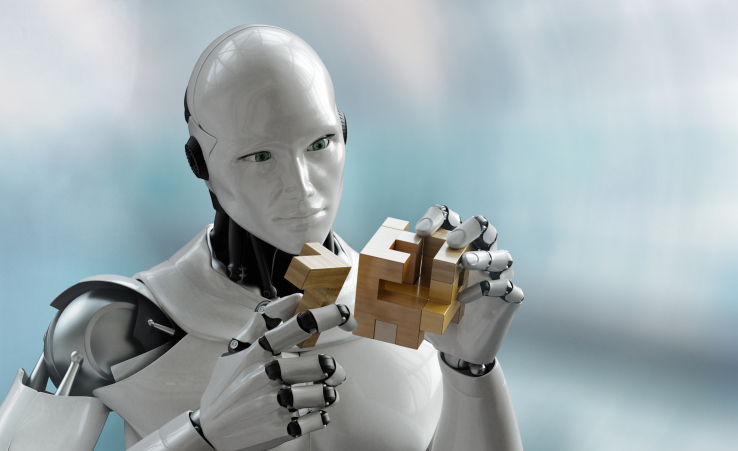
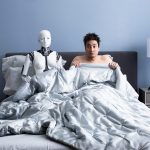
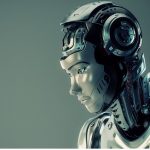
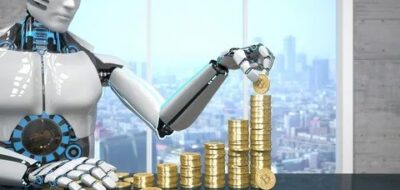
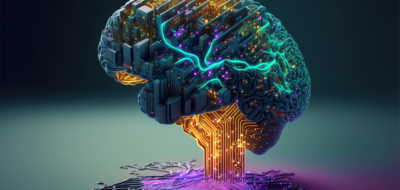

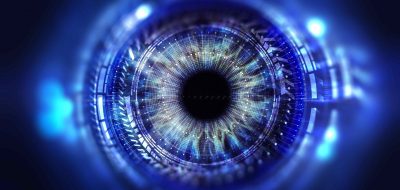


John McLean
AI techniques such as machine learning extract more value from pure data. Algorithms can only predict when for example a customer is ready take an action. Industrial giants such as GE and Siemens now sell themselves as data firms, not mentioning Google, Amazon, Facebook …
John Accural
Artificial intelligence to generate new cancer drugs on demand:
https://www.eurekalert.org/pub_releases/2016-12/imi-ait122016.php
… and this is great !!!
Norbert Biedrzycki
Thank you for a link
Jacek B2
Interesting read
John McLean
Augmented Reality is a technology which should drive of evolution going forward. This will create an additional connection bthewwn humas and machines
CabbH
Some have speculated that the most ethical way to program AI is to program AI with ethics. However, I speculate that AI should primarily be driven to obey. AI will most likely be used as a weapon as soon as it is completed, and the worst thing that could happen is for the robotics that you own to have a moral dilemma about fighting back.
Furthermore, the second threat of robotics is for them to become so independent that they decide to rebel, and I think that in that case the drive to obey would be the only thing saving humanity from their rebellion.
Mac McFisher
Some have speculated that the most ethical way to program AI is to program AI with ethics. However, I speculate that AI should primarily be driven to obey. AI will most likely be used as a weapon as soon as it is completed, and the worst thing that could happen is for the robotics that you own to have a moral dilemma about fighting back.
Adam T
See this one: https://singularityhub.com/2016/02/15/where-artificial-intelligence-is-now-and-whats-just-around-the-corner/ Ultimately, during the AI revolution taking place in the next three years, AIs will be integrated into everything around us, combining sensors and networks. AIs will push forward the ideas of transparency, of seamless interaction with devices and information, making everything personalized and easy to use. We’ll be able to harness that sensor data and put it into an actionable form, at the moment when we need to make a decision.
TomCat
IoT sould drive the IT indstry growth going forward. 20 bln devicess till 2020. This is gonna be a integration and security issue as well. Connection between business units and vertical industries such as marketing, healthcare and financial services, instead of restricting access to a handful of data scientists are gonna be key
Norbert Biedrzycki
One opportunity is in Healthcare. IoT will leverage the technology to connect “Things” like Bluetooth thermometers and Heart rate devices to medical systems. This will be one of major growth drivers going forward as well
Guang Go Jin Huan
Once something like AI is turned on, and if intelligence and consciousness are something can be created in a non-biological way, we have no way to stop it. It can gain access to weapons or manufacturing. Or it can simply manipulate people with such efficiency we won’t even realize it is being done. It quickly becomes so smart no one understands it anymore and it can do things I can’t even imagine or make up in this reply, because I am a meat bag.
I agree that this seems like sci fi garbage magic…but…Elon Musk and Stephen Hawking are not Alex Jones. They work with some of the smartest people on earth, probably have access to high level research the public doesn’t see, and they seem to be worryingly preoccupied with it. I personally don’t see how we get from modern supercomputers to a real AI with present tech, but that doesn’t mean a team in some high-level laboratory isn’t close to a breakthrough.
TommyG
It’s unlikely that Artificial Intelligence will replace all of information and data used and collected by clinician when making a diagnosis, but AI could help guide referrals to specialists
Norbert Biedrzycki
Sure, not all of the data could be collected by machine. But this will automate the process exponentially
CabbH
Deep-learning experts have generally viewed spiking neural networks as inefficient for the purposes of deep learning
TomCat
Computers and humans are very different in terms of how they think about the world. I think what’s going to be most profound is our impact, positive and negative on relationship between humans and technology. I’m sure with our smartphones today we can see a lot of people experiencing the world through their smartphones, using begging of AI we see now, in some negative ways as well
Karel Doomm2
Many of us recognize robotic automation as an inevitably disruptive force. However, in a classic example of over optimism, while majority of us believe that robots will inevitably perform most of the work currently done by human beings during the next 50 years and their current jobs will either probably exist in their current form within the same timeframe. We will see
Norbert Biedrzycki
I don’t think so that robots will replace humans in they creative, innovative roles. This is gonna be our domain for sure